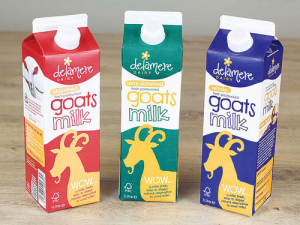A dairy doe should be milked the same way as a dairy cow, using good dairy hygiene. Milk by hand or machine; attend to milk cleanliness and cooling as for any other milk.
Goat milk fat and protein is more easily digestible than that of cow milk. This higher digestibility of protein is important to infants (human and animal) and to invalids and convalescents. And, glycerol ethers are much higher in goat than in cow milk, important for nourishing a newborn.
Goat milk tends to have a better buffering quality, which is good for treating ulcers. And goat milk is a good replacement for cow milk in diets of people allergic to cow milk.
The natural homogenisation of goat milk is, in human health, much better than mechanically homogenised cow milk. It appears that fat globules forcibly broken up by mechanical means allow an enzyme in milk fat (xanthine oxidase) to get free and penetrate the intestinal wall.
Once xanthine oxidase gets through the intestinal wall and into the bloodstream, it is capable of scarring the heart and arteries, which in turn may stimulate the body to release cholesterol into the blood in an attempt to lay a protective fatty material on the scarred areas. This can lead to arteriosclerosis.
Many dairy goats in their prime average 2.5 - 3.5L of milk daily during a ten-month lactation, giving more soon after freshening and gradually lessening toward the end of their lactation.
The milk averages 3.5% butterfat. A doe may be expected to reach her heaviest production during her third or fourth lactation.
Goat milk is used for drinking, cooking and baking; to make cheese, butter, ice cream, yogurt, candy, soap, etc.
Goat milk is whiter than whole cow milk. Butter and cheese made from goat milk are white, but may be colored during processing.
Due to its small fat globules and soft small curd, products made with goat milk are smooth and cream-like. Goat milk is also naturally emulsified.
Chevre is the French word for goat. Domestically, it is a generic term that applies to all goat cheeses and more specifically the mild fresh cheeses.
The three fatty acids which give goat products their distinctive flavor are capric, caprylic and caproic.
• Article sourced from American Dairy Goat Association www.adga.org
















